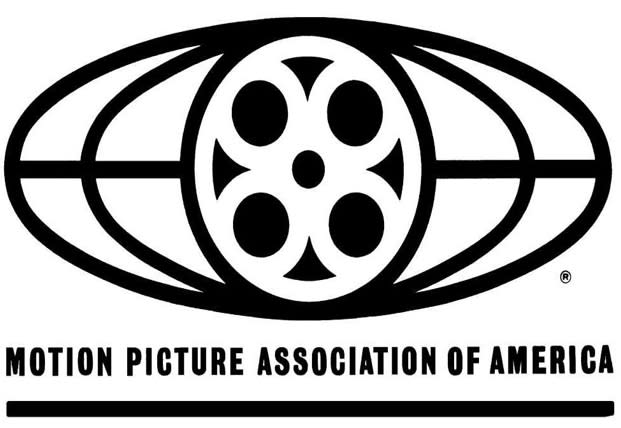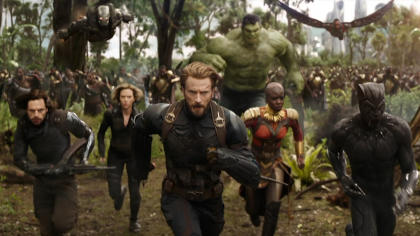Global Entertainment Industry Raked In Near $97B In 2018; Home Sector Alive With $55B+, But U.S. Digital Spend Crushed Moviegoing – MPAA Annual Report

A week and a half prior to the exhibitor-distributor love-in CinemaCon, the Motion Picture Association of America has released their annual entertainment industry report, showing that the theatrical and home ancillary sectors were vibrant at a record $96.8 billion in revenues in 2018, +9% over 2017.
Global box office, which has already been previously reported at record levels, was $41.1B, with domestic B.O. also notching a banner year of $11.9B.
Related stories
What Netflix's Official MPAA Membership Means - Update
MPAA Communications Vets Chris Ortman, Adria Marquez Get Promoted
Movies Are Getting Better And Better, Those Rising RottenTomatoes.com Scores Say
Some of the majors might be crying that the home entertainment sector has collapsed, and are continuing to secretly devise behind the scenes how to pull early PVOD windows off, but the MPAA report shows that global and U.S. home entertainment spending are at their highest levels respectively (for combined physical and digital transactions) at $55.7B billion (+16% versus 2017) and $23.3B (+12%). In sum, reports about the death of the home entertainment sector have been greatly exaggerated (that said, film finance sources will contend, a the bulk of a film’s revenue is banked at the B.O. first, not the other way around which was the case in the 1990s).

.
Broken out, in the U.S. physical home entertainment (DVD revenue) is at a low of $5.8B, but digital is at a record high of $17.5B (that includes electronic sell-through, VOD and subscription services).
In other words, U.S. digital spend of $17.5B beats domestic B.O. ticket sales of $11.9B by 47%. An interesting factoid as Netflix joins the MPAA ranks, and ponders a bigger theatrical window for its upcoming mega fall title The Irishman from Martin Scorsese.
In regards to the percent shelled out by consumers: 44% spent a bit more on digital home entertainment than the theatrical experience (42%) worldwide and far more than physical home entertainment (such as DVDs) (14%). Stateside, digital home entertainment spending outstripped theatrical moviegoing spending, 50% to 34%, with physical spend nearly squashed at 16%.
Broken out overseas home entertainment shows the same trend with digital at a record level ($25.1B) trumping physical spend ($7.3B) at its lowest levels.

Netflix’s ‘Bird Box’ was viewed by 80M households
Further deep-dive on home entertainment: U.S. Streaming subscription revenues hit a record $13.3B stateside, up from 2017’s $10.4B, with transactional home entertainment spend easing from $10.5B in 2017 to $10B last year.
What was once an industry brief when MPAA Chairman Jack Valenti oversee the org has blossomed into a catalog of data, drilling down into various sectors of the entertainment industry.
“In today’s dynamic marketplace, stories come to life for audiences in theaters, at home, and on the go,” said Charles Rivkin, Chairman and CEO of the Motion Picture Association of America (MPAA). “Our companies continue to deliver content where, when, and how audiences want it – and the numbers released today speak volumes.”
Other notable takeaways out of the MPAA report:

.
–In a composition of 2018’s gender share of population and everyday home viewers, women watched more streaming than men, 54% to 46% whereas guys can’t let go of their DVDs, watching them at 59% to females’ 41%.
–U.S./Canada theatrical admissions hits 1.3 billion, +5% over 2017. Though down from the ten year high of 2009’s 1.42B (this is based off the average movie ticket prices of $9.11 which NATO announced back in January). The drum, which even Valenti screamed eons ago was that movies are the most economical form of entertainment for a family of four ($36.44) compared to other entertainment outings and the MPAA continues to emphasize that: NFL tickets ($401.04), NHL ($267.45), Theme Parks ($252.92), NBA ($232.52), and MLB games ($129.76) and the MPAA continues to emphasize that showing that $36.44. Editor’s note: I’ve always argued that a further expounding on the average ticket price needs to be conducted, breaking out average large format prices, Tuesday night prices, major chain average price, even geographical breakdown. When was the last time you spent $9.11 on a movie ticket? In any major metropolitan market the price is well above $12, even in the teens. Three Imax matinee tickets to a new studio release can easily cost a combined $50 in a suburban LA market.
–Total films released reached their second highest numbers ever at 758 in 2018, down from 785 titles in 2017. Among the MPAA studios, their number of releases totaled 127, the second lowest over the last ten years, the last low being in 2013 when the majors released 114 films.

.
—Most frequent moviegoers remain the 25-39 demo at 10.8M, but they’re down from 11.1M in 2017. The 18-24 demo, upticked from 5.2M to 5.5M between 2017 and 2018. Teenagers 12-17, the biggest headache for major studios when pushing non-superhero pic event titles, declined from 5.5M to 5M between 2017 and 2018.
–Men buy most of the tickets sold compared to women, 53% vs. 47%.
–Frequent moviegoers have a higher share of ownership of each of the key technology products, when compared to the total adult population, in regards to smartphones (91%), computers (88%), disc-players (63%), and tablets (68%).
–The total number of theatrical screens worldwide increased by seven percent, reaching nearly 190,000.
One of the key pieces of data greatly missed which was previously published in the annual MPAA industry reports of the late 1990s and early aughts: The average production cost of a major studio release and an independent movie. Instead the report reveals the number of films going into production by the following budget breakdowns (not counting P&A) levels of $1M+ (576 vs. 549 between 2018 and 2017), between $1M-$15M (405 vs. 387) and $15M+ (171 vs. 162), figures which don’t adequately assesses the number of tentpoles or mid-level budgeted films being produced for the marketplace. Statistically speaking, film finance sources have told Deadline that bigger budget films at $100M have the better chance of being profitable over mid and low-budget theatrical releases.
Another stat in the MPAA massive industry report that would be welcome: Is the entertainment industry still the biggest U.S. export after the aviation industry? For years that was historically the case, but it would be great to see how entertainment stacks up against Silicon Valley, auto manufacturing, the energy industry, U.S. tourism, etc.
Sign up for Deadline's Newsletter. For the latest news, follow us on Facebook, Twitter, and Instagram.

